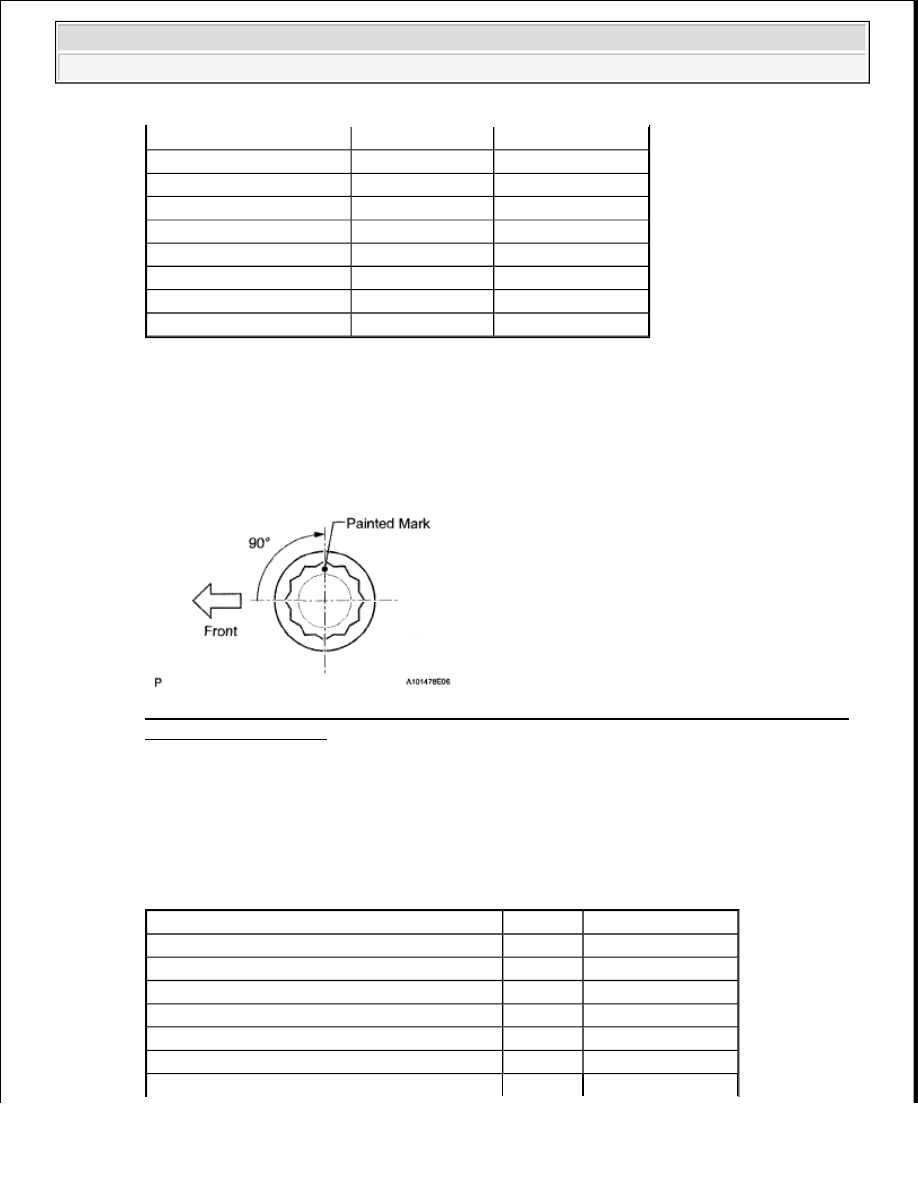Content .. 1561 1562 1563 1564 ..
Toyota Tundra. Manual - part 1563

NG: REPAIR OR REPLACE HARNESS OR CONNECTOR
OK: Go to Next Step
2. CHECK HARNESS AND CONNECTOR (IGNITION COIL ASSEMBLY - ECM)
a. Disconnect the D10, D12, D14, D16, D19, D21, D23 or D25 ignition coil with igniter connector.
Fig. 151: Identifying Terminals Of D10, D12, D14, D16, D19, D21, D23 Or D25 Ignition Coil
With Igniter Connector
Courtesy of TOYOTA MOTOR SALES, U.S.A., INC.
b. Disconnect the D74 ECM connector.
c. Measure the resistance according to the value(s) in the table below.
Standard resistance
RESISTANCE SPECIFIED CONDITION
Tester Connection
Switch Condition Specified Condition
D10-1 (+B) - D10-4 (GND) Ignition switch ON
11 to 14 V
D25-1 (+B) - D25-4 (GND) Ignition switch ON
11 to 14 V
D12-1 (+B) - D12-4 (GND) Ignition switch ON
11 to 14 V
D23-1 (+B) - D23-4 (GND) Ignition switch ON
11 to 14 V
D14-1 (+B) - D14-4 (GND) Ignition switch ON
11 to 14 V
D21-1 (+B) - D21-4 (GND) Ignition switch ON
11 to 14 V
D16-1 (+B) - D16-4 (GND) Ignition switch ON
11 to 14 V
D19-1 (+B) - D19-4 (GND) Ignition switch ON
11 to 14 V
Tester Connection
Condition Specified Condition
D10-2 (IGF1) - D74-104 (IGF1)
Always
Below 1 ohms
D25-2 (IGF2) - D74-105 (IGF2)
Always
Below 1 ohms
D12-2 (IGF2) - D74-105 (IGF2)
Always
Below 1 ohms
D23-2 (IGF1) - D74-104 (IGF1)
Always
Below 1 ohms
D14-2 (IGF2) - D74-105 (IGF2)
Always
Below 1 ohms
D21-2 (IGF1) - D74-104 (IGF1)
Always
Below 1 ohms
2009 Toyota Tundra
2009 ENGINE PERFORMANCE Engine Control System (3UR-FBE) - Tundra